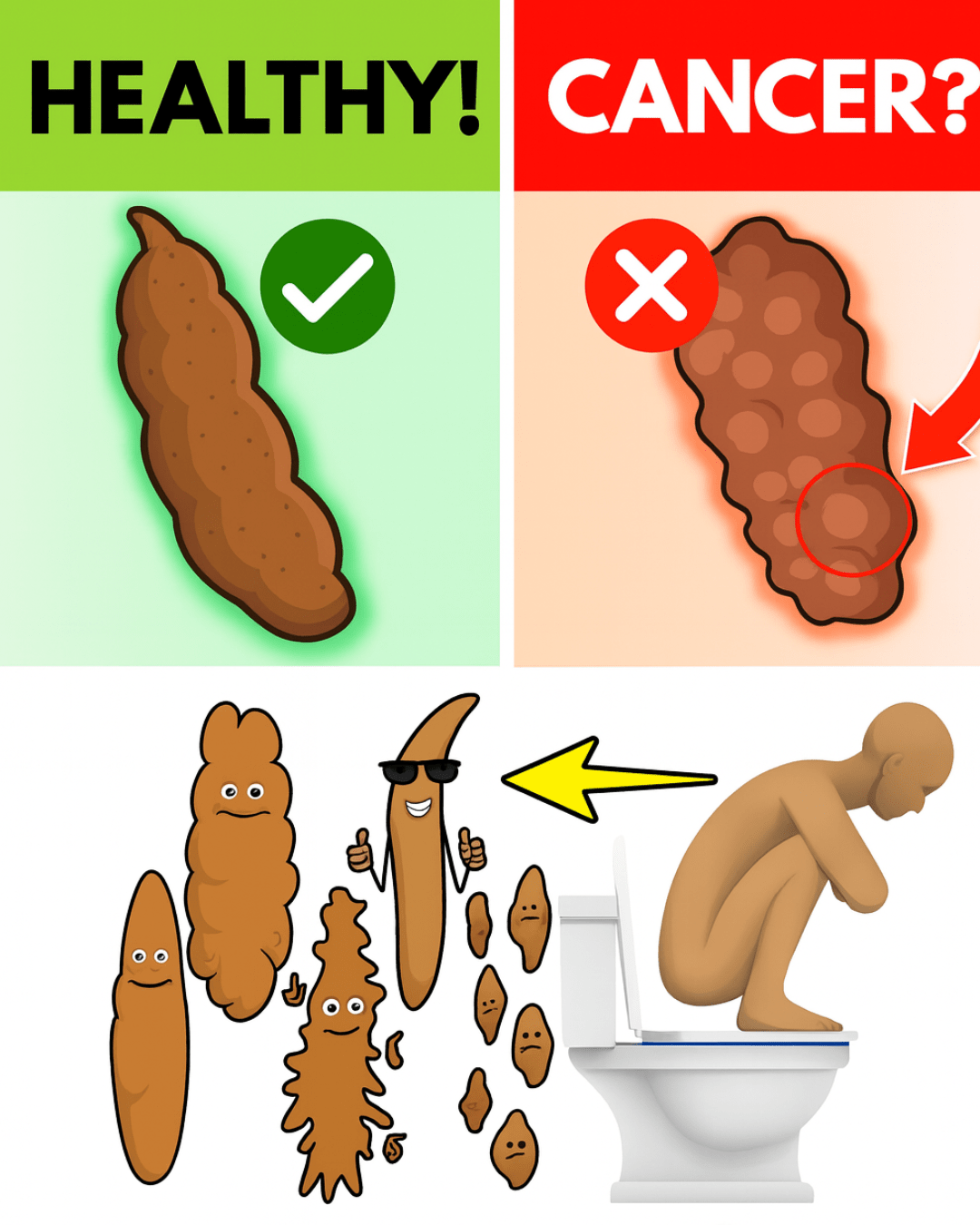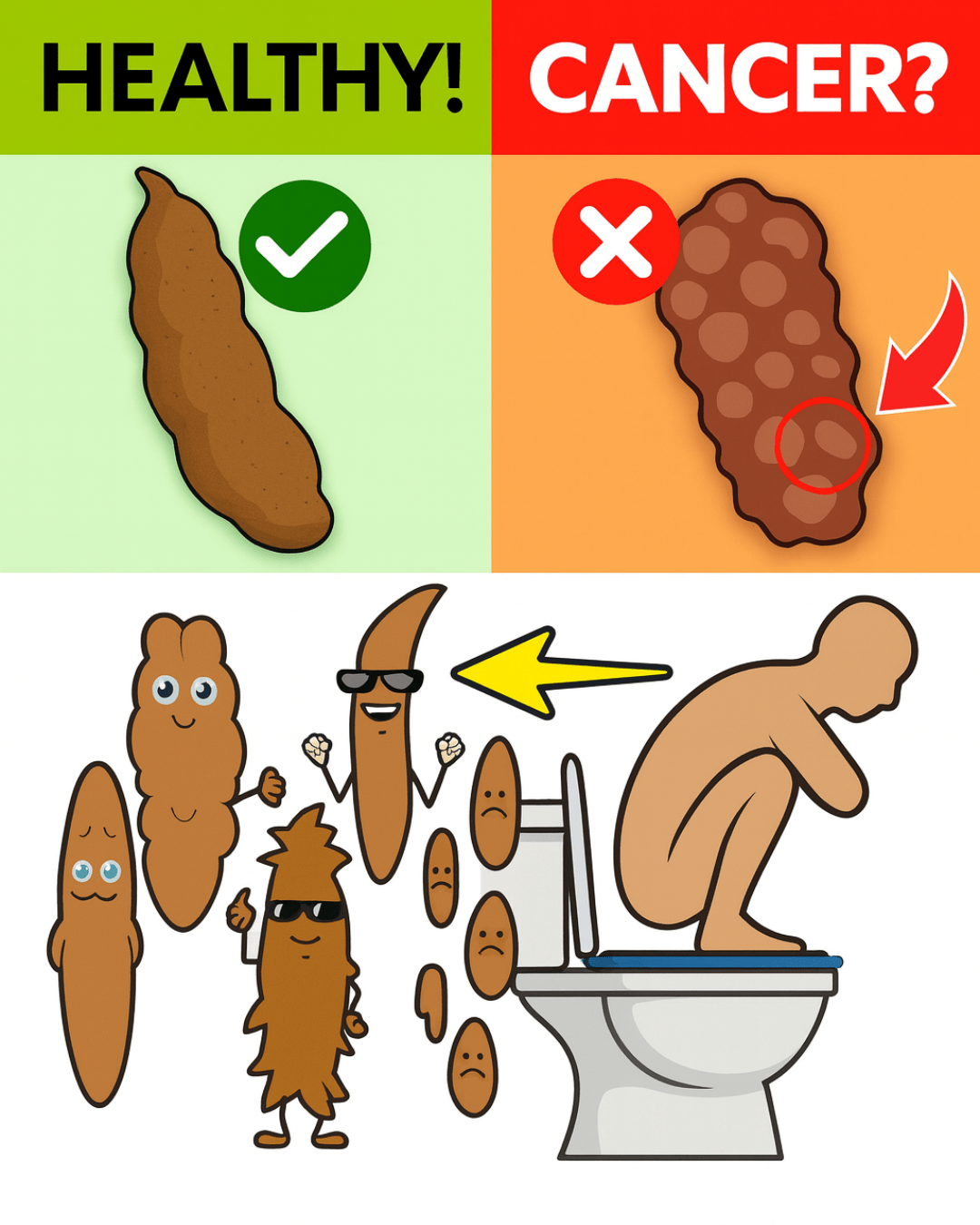What if the secret to understanding your health was hiding in plain sight—right in your toilet bowl? It’s not a topic we love to discuss, but the color of your stool is a powerful indicator of your body’s inner workings. From digestion to liver function, your poop’s hue can reveal critical clues about your well-being, alerting you to everything from harmless dietary changes to serious medical conditions. Curious to know what your body is trying to tell you? Let’s dive into this fascinating guide to decoding your stool color and learn how to take charge of your health today.

🩺 Why Your Stool Color Matters
Your stool is more than just waste—it’s a window into your digestive system. The normal brown color comes from bile, a fluid produced by your liver to break down fats. When digestion, bile flow, or gut health is disrupted, your stool’s color can change dramatically. While some shifts are harmless (like after eating vibrant foods), others may signal underlying issues that need attention. By paying attention to these changes, you can catch potential problems early and take proactive steps toward better health.
Understanding your stool color empowers you to listen to your body’s signals. Whether it’s a temporary quirk or a sign of something more serious, this guide will help you interpret the message and act wisely.
💩 Normal Brown Stool: The Gold Standard
A healthy digestive system produces brown stool, the hallmark of balanced bile production and smooth digestion. This rich, earthy hue indicates that your liver, gallbladder, and intestines are working in harmony to process nutrients and eliminate waste. If your stool is consistently brown and well-formed, congratulations—your digestive system is likely in top shape.
What it means: Your body is efficiently digesting fats, and bile is flowing as it should. Keep up your healthy habits to maintain this balance.
🌿 Green Stool: A Speedy Journey or Dietary Influence?
Ever noticed your stool taking on a green tint? This can happen when food moves through your intestines too quickly, leaving bile—which starts as green—less time to break down into its characteristic brown. Green stool can also result from certain foods or supplements.
Possible causes:
- Eating leafy greens like spinach, kale, or broccoli
- Taking iron supplements
- Experiencing diarrhea, which speeds up digestion
What to do: If green stool is occasional and tied to diet, there’s no cause for concern. However, persistent green stool with diarrhea or discomfort may warrant a check-in with your doctor to rule out digestive issues.
🧈 Yellow or Greasy Stool: A Sign of Fat Trouble
Yellow, greasy stool that smells unusually foul is a red flag that your body may not be absorbing fats properly. This could point to issues with your gallbladder, pancreas, or intestines, where fat digestion occurs.
Possible causes:
- Malabsorption, such as in celiac disease or other nutrient absorption disorders
- Gallbladder issues, like gallstones or inflammation
- Pancreatic disorders, which impair fat-digesting enzymes
What to do: Yellow, greasy stool should prompt a visit to your healthcare provider, especially if accompanied by weight loss, bloating, or abdominal pain. These symptoms could indicate a serious condition requiring medical attention.
⚠️ Black Stool: A Warning You Can’t Ignore
Black stool can be alarming—and for good reason. While certain foods or medications can cause a harmless darkening, black, tarry stool may indicate bleeding in the upper digestive tract, such as the stomach or esophagus. This is a medical emergency that requires immediate attention.
Possible causes:
- Iron supplements or bismuth-based medications (like Pepto-Bismol)
- Foods like black licorice, blueberries, or dark chocolate
- Upper gastrointestinal bleeding, which could stem from ulcers or other serious conditions
What to do: If black stool persists beyond a day or two and isn’t linked to diet or medication, contact your doctor immediately. Early intervention can be lifesaving.
🍎 Red Stool: Dietary Culprit or Cause for Concern?
Seeing red in your stool can spark panic, but it’s not always a cause for alarm. Vibrant foods like beets or red food coloring can give your stool a reddish hue. However, red stool can also indicate blood, which may come from lower digestive issues like hemorrhoids or more serious conditions like colon problems.
Possible causes:
- Eating beets, tomatoes, or red food dye
- Hemorrhoids or anal fissures
- Bleeding in the lower digestive tract, such as from inflammatory bowel disease or colon issues
What to do: If red stool persists or is accompanied by pain, changes in bowel habits, or other symptoms, consult a healthcare professional to rule out serious conditions.
🥛 Pale, Clay-Colored, or White Stool: A Bile Blockage?
Pale, clay-colored, or white stool is a sign that bile isn’t reaching your intestines, which could point to problems with your liver, gallbladder, or bile ducts. This is one of the most concerning stool color changes and should never be ignored.
Possible causes:
- Bile duct obstruction, often due to gallstones or tumors
- Liver diseases like hepatitis or cirrhosis
- Gallbladder dysfunction
What to do: Pale or white stool requires urgent medical evaluation, especially if paired with jaundice (yellowing of the skin or eyes), abdominal pain, or fatigue. These symptoms could indicate a serious liver or bile duct issue.

🩺 When to See a Doctor
While occasional changes in stool color are normal, certain signs warrant immediate medical attention. Contact your healthcare provider if you notice:
- Persistent color changes lasting more than a few days
- Blood in your stool (red or black)
- Pale or white stool
- Accompanying symptoms like abdominal pain, nausea, weight loss, or fatigue
Early detection is key to addressing potential health issues, so don’t hesitate to seek professional advice when something feels off.
🌿 Other Factors That Influence Stool Color
Beyond medical conditions, several everyday factors can affect your stool’s appearance:
- Diet: Colorful foods like beets, leafy greens, or artificial dyes can temporarily alter stool color.
- Medications: Antibiotics, antacids, or supplements like iron can change how your stool looks.
- Hydration: Dehydration can make stool darker and harder, while proper hydration supports healthy digestion.
By keeping track of your diet, medications, and lifestyle, you can better distinguish between harmless changes and those requiring attention.
💡 How to Monitor Your Stool Health
Want to stay proactive about your health? Here are some practical tips to keep your digestive system in check:
- Keep a Log: Note changes in stool color, consistency, or frequency, along with your diet and symptoms, to identify patterns.
- Stay Hydrated: Drink plenty of water to support digestion and prevent hard, dark stools.
- Eat a Balanced Diet: Fiber-rich foods like fruits, vegetables, and whole grains promote healthy digestion and consistent stool color.
- Check Medications: Be aware of supplements or medications that might affect your stool, and discuss persistent changes with your doctor.
By staying mindful of these factors, you can better understand your body’s signals and take action when needed.
🌟 Take Control of Your Health Today
Your stool is like a daily health report card, offering valuable insights into your body’s inner workings. While it may not be glamorous, paying attention to its color can help you catch potential issues early and maintain optimal health. From the reassuring brown of a healthy digestive system to the warning signs of red, black, or pale stools, your poop is constantly communicating. Are you listening?
Don’t let embarrassment keep you from taking charge of your well-being. Start observing your stool color today, and use this guide to decode what your body is telling you. Whether it’s adjusting your diet, staying hydrated, or seeking medical advice, every step you take brings you closer to a healthier, more vibrant you. Your health is worth it—start listening to your poop’s messages now.






